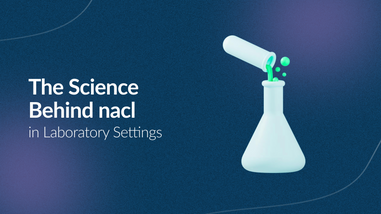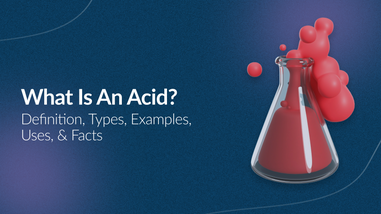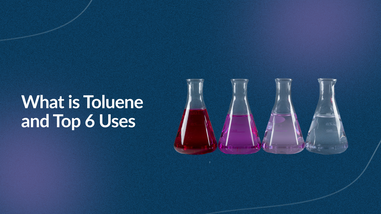- No products in the cart.
What is COVID-19?
COVID-19 is the disease caused by the novel coronavirus SARS-CoV-2. A coronavirus is a sphere that contains an unusually long single strand of RNA that is protected by a lipid bilayer dotted with transmembrane proteins and spikes of glycoproteins.1 Researchers from the University of Minnesota hypothesized that SARS-CoV-2 infects humans more easily than the SARS coronavirus is because its spike protein has a comparatively more compact “ridge” that readily attaches to the ACE2 receptor in our cells.2 Complicating matters further, a recent study indicated that SARS-CoV-2 remains communicable on some surfaces for over a week.3 Given the tenacity of the novel coronavirus to cause COVID-19 in humans and even animals, disinfecting public surfaces frequently is needed to help prevent this disease’s transmission. Lab Pro offers a variety of chemicals and sanitizers suitable ridding industrial surfaces of the coronavirus that causes COVID-19.
What Kills SARS-CoV-2?
Alcohol and bleach are popular COVID-19 surface cleansers, but other types of chemicals also destroy coronaviruses. The EPA’s List N Tool: COVID
Disinfectants is an interactive site that allows you to search whether a product is recommended for sterilizing SARS-CoV-2 from surfaces. If you can’t find the specific brand name you are looking for, you can search by active ingredient. The American Chemistry Council updated its list of Novel Coronavirus (COVID-19)—Fighting Products on 9/25/2020.
-
Alcohols: 60-80% ethanol and isopropyl Alcohol (IPA) are commonly used disinfectants for many types of microbes. At 70-90% concentration, both ethanol and IPA can execute coronaviruses in 30 seconds, although ethanol is more active against the hydrophilic lipid bilayer of coronavirus.4, 5 It is hypothesized that the water/alcohol mixture denatures and disfigures the protein and nucleic acids, rendering the dangerous genetic codes ineffective.

- Chlorine Compounds: It is theorized that sodium hypochlorite, the active component in bleach, oxidizes lipids and RNA strand in SARS-CoV-2, damaging the coronavirus irreversibly in the process. Similar hypochlorite sterilizers include those containing chlorine dioxide, sodium dichloroisocyanurate, and sodium dichloro-striazinetrione. These compounds are irritants and should never be mixed with ammonia.
- Peroxides: Peroxyacetic acid and hydrogen peroxide are oxidizers attack certain sulfur-based bonds in coronaviruses.63% peroxyacetic acid is often used to sterilize medical devices, and 1-3% hydrogen peroxide can destroy SARS-CoV in 60 seconds.7 Note that hydrogen peroxide is highly unstable at high concentrations.
- Aldehydes: Glutaraldehyde, formaldehyde, and ortho-phthalaldehyde (OPA) damage coronavirus by alkylating the proteins and RNA. Although these aldehydes are effective against coronavirus at low concentrations in only a couple of minutes, they are also toxic.8 Therefore, they are often used to sanitize surgical equipment followed by rinsing.
- Quaternary Ammonium Compounds: Alkyl dimethyl benzyl ammonium chlorides can sanitize coronaviruses in under a minute at low concentrations.3,9 Do not mix with bleach.
- Iodine: A recent study showed that 0.45%-10% povidone-iodine (polyvinylpyrrolidone iodine, PVP-I) solution exhibits ≥ 99.99% virucidal activity against SARS-CoV-2.10
-
Surfactants: Soaps and surfactants dissolve the fatty protective layer around coronaviruses. METI, the Ministry of Economy, Trade, and Industry in Japan, concluded that the following surfactants remove coronavirus:
- Sodium linear alkylbenzene sulfonate (0.1% or more)
- Alkyl glycoside (0.1% or more)
- Alkylamine oxide (0.05% or more)
- Benzalkonium chloride (0.05% or more)
- Polyoxyethylene alkylether (0.2% or more)
Methods for Keeping Surfaces Safe
The CDC offers guidance for cleaning and disinfecting public surfaces as follows:
- Normal routine cleaning with soap and water will decrease how much of the virus is on surfaces and objects, which reduces the risk of exposure.
- Disinfection using EPA-approved disinfectants against COVID-19 also help reduce the risk. Frequent disinfection of surfaces and objects touched by multiple people is important.
- When EPA-approved disinfectant are not available, alternative disinfectants can be used (for example, 1/3 cup of 5.25%–8.25% bleach added to 1 gallon of water, or 70% alcohol solutions).
Lab Pro is committed to its customers during the pandemic, providing quality solutions you can trust for COVID-19 protection. In addition, we supply some of the best sanitizers and disinfectants for clearing counters, hands, or instruments of SARS-CoV-2. When working with any chemical, consult product SDS and make sure to use appropriate PPE, such as gloves, lab coats, and splash protection.
- 70% IPA and IPA wipes
- Sodium hypochlorite
- LYSOL® Brand Disinfecting Wet Wipes
- MetriCideTM Plus Disinfectant (glutaraldehyde-based with surfactant)
- Ricca Hand Sanitizer
- Alconox cleaner
- Alcotabs
- Liquinox – Critical Cleaning Liquid Detergent
- Tergazyme
Note: These chemicals are meant to be used for research, industrial work, cleaning or disinfecting and should always be stored out of the reach of young children or infants.
For over 40 years, Lab Pro Inc. has been committed to providing a wide range of cleaning wipes and solutions in California. To learn more, visit the biggest Lab Supply showroom in California, or contact us online or at 888-452-2776.
References
- Kannan S., Shaik Syed Ali P., Sheeza A. & Hemalatha K. 2020 COVID-19 (Novel Coronavirus 2019) – recent trends. European Review for Medical and Pharmacological Sciences 24 (4), 2006–2011.
- Shang, J., Ye, G., Shi, K. et al. Structural basis of receptor recognition by SARS-CoV-2. Nature 581, 221–224 (2020). https://doi.org/10.1038/s41586-020-2179-y
- Kampf G., Todt D., Pfaender S. & Steinmann E. 2020 Persistence of coronaviruses on inanimate surfaces and their inactivation with biocidal agents. Journal of Hospital Infection 104 (3), 246–251.
- Warnes S. L., Little Z. R. & Keevil C. W. 2015 Human coronavirus 229E remains infectious on common touch surface materials. mBio 6 (6), e01697–15.
- Rutala W., Weber D. & Healthcare Infection Control Practices Advisory Committee 2019 Guideline for Disinfection and Sterilization in Healthcare Facilities, 2008, updated, available at: https://www.cdc.gov/infectioncontrol/pdf/guidelines/disinfection-guidelines-H.pdf.
- McDonnell G. & Russell A. D. 1999 Antiseptics and disinfectants: activity, action, and resistance. Clinical Microbiology Reviews 12 (1), 147.
- Herzog A. B., Pandey A. K., Reyes-Gastelum D., Gerba C. P., Rose J. B. & Hashsham S. A. 2012 Evaluation of sample recovery efficiency for bacteriophage P22 on fomites. Applied and Environmental Microbiology 78 (22), 7915–7922.
- Rabenau H. F., Kampf G., Cinatl J. & Doerr H. W. 2005a Efficacy of various disinfectants against SARS coronavirus. Journal of Hospital Infection 61 (2), 107–111.
- Saknimit M., Inatsuki I., Sugiyama Y. & Yagami K. 1988 Virucidal efficacy of physico-chemical treatments against coronaviruses and parvoviruses of laboratory animals. Experimental Animals 37 (3), 341–345.
- Anderson DE, Sivalingam V, Kang AEZ, et al. Povidone-Iodine Demonstrates Rapid In Vitro Virucidal Activity Against SARS-CoV-2, The Virus Causing COVID-19 Disease. Infect Dis Ther. 2020;9(3):669-675. doi:10.1007/s40121-020-00316-3












































